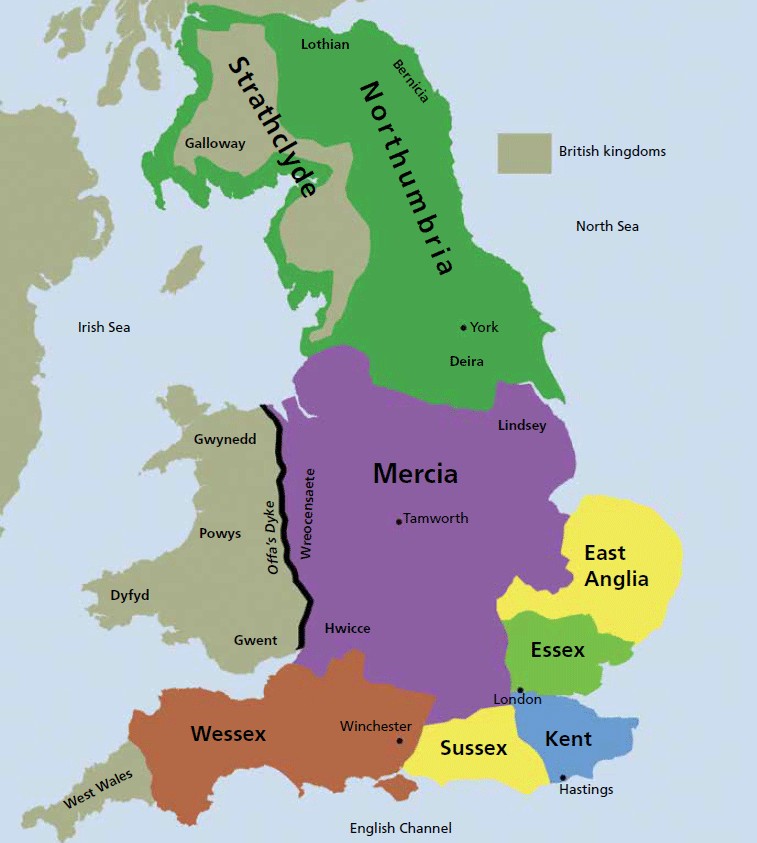What Is Anglo Saxon? Delve into the rich history, culture, and lasting impact of the Anglo-Saxons with WHAT.EDU.VN. Find answers to your burning questions and gain a deeper understanding of this fascinating period in British history. Discover Anglo-Saxon kingdoms, daily life, and key concepts, all while exploring historical linguistics and Germanic tribes.
Table of Contents
-
Frequently Asked Questions (FAQs) About the Anglo-Saxons
- Who Were the Anglo-Saxons?
- When Did the Anglo-Saxon Period Begin and End?
- Why Did the Anglo-Saxons Come to Britain?
- What Was Anglo-Saxon Society Like?
- What Language Did the Anglo-Saxons Speak?
- What Was Anglo-Saxon Religion?
- What Are Some Important Anglo-Saxon Archaeological Sites?
- What Is the Legacy of the Anglo-Saxons?
- How Did the Anglo-Saxons Influence English Law?
- What Role Did Women Play in Anglo-Saxon Society?
1. A Brief History of the Anglo-Saxons in Britain
The Anglo-Saxon period in Britain marks a significant chapter in the island’s history, spanning roughly from 410 AD to 1066 AD. This era, sometimes referred to as the early medieval period, witnessed the transformation of Roman Britannia into a collection of independent kingdoms, the widespread adoption of Christianity, and continuous conflicts with Viking invaders from the late 8th century onwards. These Germanic peoples, originating from various parts of Northern Europe, significantly shaped the cultural landscape of early England, contributing to its language, law, and social structures.
Climate change played a role in the Anglo-Saxon migrations to Britain. Warmer temperatures in Europe after 400 AD led to improved crop yields and population growth in Northern European countries. However, melting polar ice also caused flooding in low-lying areas, pushing people to seek new, more stable lands. Britain, left vulnerable after the Roman legions departed, became an attractive target for settlement.
The Anglo-Saxon migration and settlement in Britain led to the evolution of distinct English dialects, as various groups established their territories and influenced local language.
2. The Anglo-Saxon Kingdoms (c. 650-800 AD)
The Anglo-Saxon arrival in Britain wasn’t a sudden invasion but a gradual process, with Anglo-Saxon mercenaries having served in the Roman army for years. As Roman power waned, Germanic tribes – including the Angles, Saxons, Jutes, and Frisians – began arriving in larger numbers. Initially, resistance from the native Britons was limited, but around 500 AD, a Romano-British leader, possibly the legendary King Arthur (though concrete evidence is lacking), led a fierce resistance against the invaders.
Over time, these groups established various kingdoms across the country, often warring with one another. By 650 AD, seven major kingdoms had emerged, a period known as the Heptarchy:
- Kent: Settled by the Jutes. King Ethelbert of Kent was the first Anglo-Saxon ruler to convert to Christianity, influenced by St. Augustine around 595 AD.
- Mercia: A large kingdom in the Midlands, famous for King Offa, who constructed Offa’s Dyke along the border between England and Wales.
- Northumbria: Home to the monk Bede (c. 670-735), who wrote the influential “Ecclesiastical History of Britain.”
- East Anglia: Populated by Angles, divided into the North Folk (Norfolk) and South Folk (Suffolk). The Sutton Hoo ship burial was discovered here.
- Essex: (East Saxons) Site of the Battle of Maldon in 991, fought against Viking raiders.
- Sussex: The South Saxons settled in this region.
- Wessex: (West Saxons) Ruled by King Alfred the Great, who defended his kingdom against the Vikings, and his grandson Athelstan, the first King of England.
 Map of Anglo-Saxon Kingdoms
Map of Anglo-Saxon Kingdoms
This map illustrates the division of England into Anglo-Saxon kingdoms around 800 AD, highlighting the territories of Northumbria, Mercia, East Anglia, Essex, Kent, Sussex, and Wessex.
By 850 AD, these seven kingdoms had consolidated into three major powers: Northumbria, Mercia, and Wessex. The Anglo-Saxons had largely converted to Christianity, transforming the religious landscape of Britain. This period laid the foundation for the development of English culture, language, and political institutions.
3. Areas Worth Examining
To gain a deeper understanding of the Anglo-Saxon period, several key areas are worth exploring:
Poetry
Anglo-Saxon poetry offers valuable insights into the culture, values, and worldview of the time. Three notable poems include:
- The Ruin: An anonymous poem that reflects on the decay of a Roman town, highlighting the Anglo-Saxons’ perception of the past.
- Beowulf: An epic poem about a heroic warrior who battles monsters and dragons, showcasing themes of courage, loyalty, and the struggle between good and evil. Rosemary Sutcliff’s version is excellent for accessibility.
- The Battle of Maldon: A poem that recounts the heroic but ultimately unsuccessful defense against a Viking raiding party in Essex, emphasizing themes of bravery and sacrifice.
The Sutton Hoo Ship Burial
The Sutton Hoo ship burial, discovered in East Anglia, provides a wealth of information about Anglo-Saxon kingship, religion, warfare, trade, and craftsmanship. This archaeological find, dating back to the early 7th century, contained a treasure trove of artifacts, including weapons, armor, jewelry, and feasting equipment.
The Sutton Hoo helmet, a symbol of Anglo-Saxon craftsmanship and artistry, provides insights into the warrior culture and status symbols of the era.
Daily Life
Understanding daily life in Anglo-Saxon England reveals the social structures, economic activities, and cultural practices of the people. Archaeological evidence and historical sources shed light on aspects such as:
- Agriculture: Farming was the primary economic activity, with crops like wheat, barley, and oats being cultivated.
- Craftsmanship: Anglo-Saxons were skilled craftspeople, producing intricate metalwork, jewelry, pottery, and textiles.
- Housing: Houses were typically simple structures made of wood and thatch, with a central hearth for cooking and heating.
- Diet: The Anglo-Saxon diet consisted mainly of grains, vegetables, and meat, with ale and mead as common beverages.
- Social Structure: Anglo-Saxon society was hierarchical, with kings, nobles, and freemen at the top, followed by slaves at the bottom.
Alfred the Great
Alfred the Great, King of Wessex (871-899 AD), played a pivotal role in defending England against the Vikings and promoting learning and culture. He is remembered for:
- Military Victories: Defeating the Vikings at the Battle of Edington in 878 and establishing a boundary between Anglo-Saxon and Viking territories (the Danelaw).
- Defense Reforms: Strengthening his kingdom’s defenses by building fortresses (burhs) and creating a standing army.
- Naval Development: Constructing ships to counter Viking sea attacks, laying the foundation for the English navy.
- Educational Initiatives: Promoting literacy by translating books into English and encouraging learning.
- Legal Reforms: Commissioning the Anglo-Saxon Chronicle, a historical record of the Anglo-Saxons in Britain.
4. Key Concepts
Understanding the Anglo-Saxon period requires familiarity with several key concepts:
- Invasion: The arrival of Germanic tribes in Britain and their gradual conquest of the land.
- Settlement: The establishment of Anglo-Saxon communities and kingdoms across Britain.
- Heathens: The pagan beliefs and practices of the early Anglo-Saxons before their conversion to Christianity.
- Christianity: The spread of Christianity in Anglo-Saxon England and its impact on culture, society, and politics.
- Monastic Life: The establishment of monasteries as centers of learning, religious devotion, and artistic production.
- Kingdom: The various Anglo-Saxon kingdoms that emerged and their constant competition for power and territory.
- Chronicle: The Anglo-Saxon Chronicle, a historical record that provides valuable insights into the events and developments of the period.
- English: The development of the English language from the Germanic dialects spoken by the Anglo-Saxons.
5. Frequently Asked Questions (FAQs) About the Anglo-Saxons
Here are some frequently asked questions about the Anglo-Saxons to help you deepen your understanding:
Who Were the Anglo-Saxons?
The Anglo-Saxons were Germanic peoples who migrated to Britain in the 5th and 6th centuries AD. They primarily consisted of Angles, Saxons, and Jutes, originating from various parts of Northern Europe, including modern-day Germany and Denmark. These tribes established settlements and kingdoms across Britain, laying the foundation for what would eventually become England. “The Anglo-Saxons were not a single, unified group, but rather a collection of distinct tribes with their own customs and dialects,” explains historian Dr. Eleanor Parker.
When Did the Anglo-Saxon Period Begin and End?
The Anglo-Saxon period is generally considered to have begun around 410 AD, with the end of Roman rule in Britain, and ended in 1066 AD, with the Norman Conquest. This period spans over six centuries and is marked by significant political, social, and cultural changes.
Why Did the Anglo-Saxons Come to Britain?
The Anglo-Saxons migrated to Britain for various reasons, including:
- Economic Opportunities: The fertile lands and resources of Britain offered opportunities for agriculture and settlement.
- Political Instability: The decline of the Roman Empire created a power vacuum in Britain, making it vulnerable to invasion.
- Climate Change: Rising sea levels and flooding in Northern Europe may have pushed some Anglo-Saxons to seek new lands.
- Mercenary Service: Some Anglo-Saxons were initially hired as mercenaries by the Britons to defend against other invaders, but they eventually turned against their employers and established their own kingdoms.
What Was Anglo-Saxon Society Like?
Anglo-Saxon society was hierarchical, with a clear social structure:
- Kings (Cyning): Ruled over kingdoms and were responsible for law, order, and defense.
- Nobles (Ealdormen/Thegns): Served as advisors and warriors to the king, owning large estates and wielding significant power.
- Freemen (Ceorls): Farmers, craftsmen, and traders who formed the backbone of Anglo-Saxon society. They had rights and responsibilities, including military service.
- Slaves (Theows): The lowest social class, consisting of prisoners of war, criminals, or those born into slavery. They had limited rights and were considered property.
Family and kinship played a central role in Anglo-Saxon society, with strong emphasis on loyalty and honor.
What Language Did the Anglo-Saxons Speak?
The Anglo-Saxons spoke Old English, a Germanic language that is the ancestor of modern English. Old English was not a uniform language, but rather a collection of dialects spoken in different regions of England. It was characterized by complex grammar, a rich vocabulary, and the use of alliteration in poetry. “Old English is a fascinating language that provides valuable insights into the Anglo-Saxon mind,” notes linguist Dr. David Crystal.
What Was Anglo-Saxon Religion?
Initially, the Anglo-Saxons practiced a form of Germanic paganism, with a pantheon of gods and goddesses, including:
- Woden (Odin): The chief god, associated with wisdom, magic, and war.
- Thor (Thunor): The god of thunder, lightning, and strength.
- Freyja (Frigg): The goddess of love, beauty, and fertility.
- Tiwe (Tyr): The god of justice and law.
They also practiced various rituals and customs, such as animal sacrifice, ancestor worship, and the celebration of seasonal festivals.
In the late 6th and 7th centuries, Christianity gradually spread throughout Anglo-Saxon England, largely due to the work of missionaries like St. Augustine. By the 8th century, most Anglo-Saxons had converted to Christianity, and the Church became a powerful institution in society.
What Are Some Important Anglo-Saxon Archaeological Sites?
Several archaeological sites provide valuable insights into Anglo-Saxon life and culture:
- Sutton Hoo (Suffolk): The site of a royal ship burial, containing a wealth of artifacts, including a helmet, weapons, and jewelry.
- West Stow (Suffolk): A reconstructed Anglo-Saxon village, offering a glimpse into daily life.
- Yeavering (Northumberland): The site of a royal palace, revealing the political and social organization of Anglo-Saxon kingdoms.
- Lindisfarne (Northumberland): A monastic site that was an important center of learning and religious devotion.
What Is the Legacy of the Anglo-Saxons?
The Anglo-Saxons left a lasting legacy on English culture, language, and institutions. Their contributions include:
- The English Language: Old English formed the basis of modern English, contributing vocabulary, grammar, and idioms.
- English Law: Anglo-Saxon legal codes and customs influenced the development of English common law.
- Local Government: Anglo-Saxon administrative divisions, such as shires and hundreds, continue to exist in England today.
- Literature and Art: Anglo-Saxon literature, such as Beowulf, and art, such as the Sutton Hoo treasures, are important cultural achievements.
- Place Names: Many English place names, such as Birmingham, Nottingham, and Southampton, have Anglo-Saxon origins.
How Did the Anglo-Saxons Influence English Law?
Anglo-Saxon legal codes, such as those of King Alfred and King Ine, established rules and procedures for maintaining order, resolving disputes, and punishing crimes. These codes influenced the development of English common law in several ways:
- Emphasis on Custom: Anglo-Saxon law was based on custom and tradition, reflecting the values and beliefs of the people.
- Use of Writs: Anglo-Saxon kings issued writs, or written orders, to enforce laws and settle disputes.
- Trial by Ordeal: Anglo-Saxon law used trial by ordeal to determine guilt or innocence, relying on divine intervention.
- Weregild System: Anglo-Saxon law established a system of weregild, or compensation, for injuries or death, based on the social status of the victim.
What Role Did Women Play in Anglo-Saxon Society?
Women played a significant role in Anglo-Saxon society, although their status and opportunities varied depending on their social class. Some women held positions of power and influence, such as:
- Abbesses: Ruled over monasteries and wielded considerable authority.
- Queens: Exercised political influence and sometimes ruled in their own right.
- Noblewomen: Managed estates and households, playing a key role in family and community affairs.
Women were also involved in various economic activities, such as weaving, brewing, and farming. They had legal rights, including the right to own property and make contracts. “Anglo-Saxon women were not passive figures, but active participants in their society,” argues historian Dr. Carolyne Larrington.
6. Unlock More Historical Insights with WHAT.EDU.VN
Do you still have questions about the Anglo-Saxons or any other historical topic? Don’t hesitate to ask! At WHAT.EDU.VN, we provide a free platform for you to ask any question you have and receive prompt and accurate answers. Whether you’re a student, a curious learner, or just seeking information, our community of experts is here to help.
Why Choose WHAT.EDU.VN?
- Free to Use: Ask any question you want without any cost.
- Fast and Accurate Answers: Get reliable information quickly.
- Community of Experts: Connect with knowledgeable individuals who are passionate about sharing their expertise.
- Easy to Use Platform: Simply type in your question and receive answers in a clear and concise manner.
Have a question about the Anglo-Saxons that wasn’t answered here? Visit WHAT.EDU.VN today and get the answers you need!
Contact us:
Address: 888 Question City Plaza, Seattle, WA 98101, United States
Whatsapp: +1 (206) 555-7890
Website: WHAT.EDU.VN
Ask your questions on WHAT.EDU.VN and unlock a world of knowledge. Get free, reliable answers from our community of experts.
Don’t let your curiosity go unanswered. Join the what.edu.vn community today and start exploring the world of knowledge!

